New Maps Show How Climate Change is Making California’s “Fire Weather” Worse
ProPublica is a nonprofit newsroom that investigates abuses of power. Sign up to receive our biggest stories as soon as they’re published.
As California continues battling its worst wildfire season on record, new research shows that fall fire weather days — days with high temperatures, low humidity and high wind speeds — will double in parts of the state by the end of the century and will increase 40% by 2065. On these days all it takes is a spark from a downed power line, or a hammer hitting a metal stake. A small fire can grow into an inferno at startling speed.
The biggest increases in the number of these fall fire weather days will come along the coast and in the Sierra Nevada. That means more fires in places like Yosemite National Park, which had to close last month due to smoke, and in the Los Angeles-Orange County megalopolis. By 2050, if emissions continue unabated, L.A. could see up to 12 days of severe fire weather each fall, and Yosemite as many as 14.
California's fire season typically runs from July to December, but September through November are especially deadly — and this September was the hottest and the most fiery on record. The Creek Fire, Bobcat Fire, El Dorado Fire, Glass Fire, Slater/Devil Fire, Zogg Fire … the burning never stopped, the smoke never cleared. They won’t for some time.
The fall is when the state’s trees, shrubs and grasses are already dry from summer drought and heat, and the hot Santa Ana and Diablo winds start blowing west over the mountains toward the ocean.
These fall conditions are what caused two deadly fires in 2018: the Camp Fire, which destroyed the town of Paradise, in the Sierra foothills, and the Woolsey fire, which burned in the Santa Monica Mountains north of Los Angeles.
Fall days with fire weather conditions are steadily growing more frequent with climate change, according to the research.
For example, in the 1970s, the Sierra foothills around Paradise experienced about eight days with prime fire weather conditions each fall.
Paradise now sees about 10 fire weather days each fall — a 25% increase.
According to the research, by midcentury, parts of Northern California could see as many as 14 fire weather days each fall in the high emissions scenario, a worst case for climate change in which we keep emitting greenhouse gases at high levels.
Large swaths of Southern California, such as the already fire-prone areas around Los Angeles, Orange County and San Diego, will see up to 13 fall fire weather days a year.
END scroller
Why will these weather patterns lead to more fire? The answer starts with knowing the basic fire dynamics of California.
Historically, the state has endured two distinct fire seasons: one in the north, one in the south, each driven by different weather patterns at different times of the year.
In the north, a summer fire season has been driven by high temperatures and low humidity. In Southern California, fall fire season is driven by east winds. With climate change, though, both the summer and fall fire seasons have grown longer, and are melting into each other, overlapping in time and space.
“We're getting big summer fires in Southern California in places where we used to primarily get big fires in the autumn,” explained Crystal Kolden, a pyrogeographer at the University of California, Merced and one of the paper’s co-authors. “We're getting big fall fires in places where we used to predominantly get summer fires.”
Look at what happened on Nov. 8, 2018, when the Camp Fire started in Northern California and the Woolsey Fire started in Southern California. “So the exact same day, those two fires started hundreds of miles apart,” Kolden said. “What we looked at in the paper was, OK, was that a freak event? Or is that going to happen more frequently?”
The answer — drawn from their paper — is not comforting. “It's going to happen more frequently.” In fact, it just happened again. The August Complex fire, the largest fire in California history, is still burning right now in Northern California, in a region that in the past wildfires burned in the summer, but not the fall. “It's October, and it's still going with no rain in sight,” Kolden said.
“I can only speak for my husband and I but it has permeated into our consciousness in a way that makes our continued presence in the state unlikely,” said Leonard Reyno, who lives in Marin County. “We are naturalized immigrant citizens who have lived here for 17 and 20 years respectively. We love it and will defend it to the day we die. But we can no longer live this way.”
2006-2035
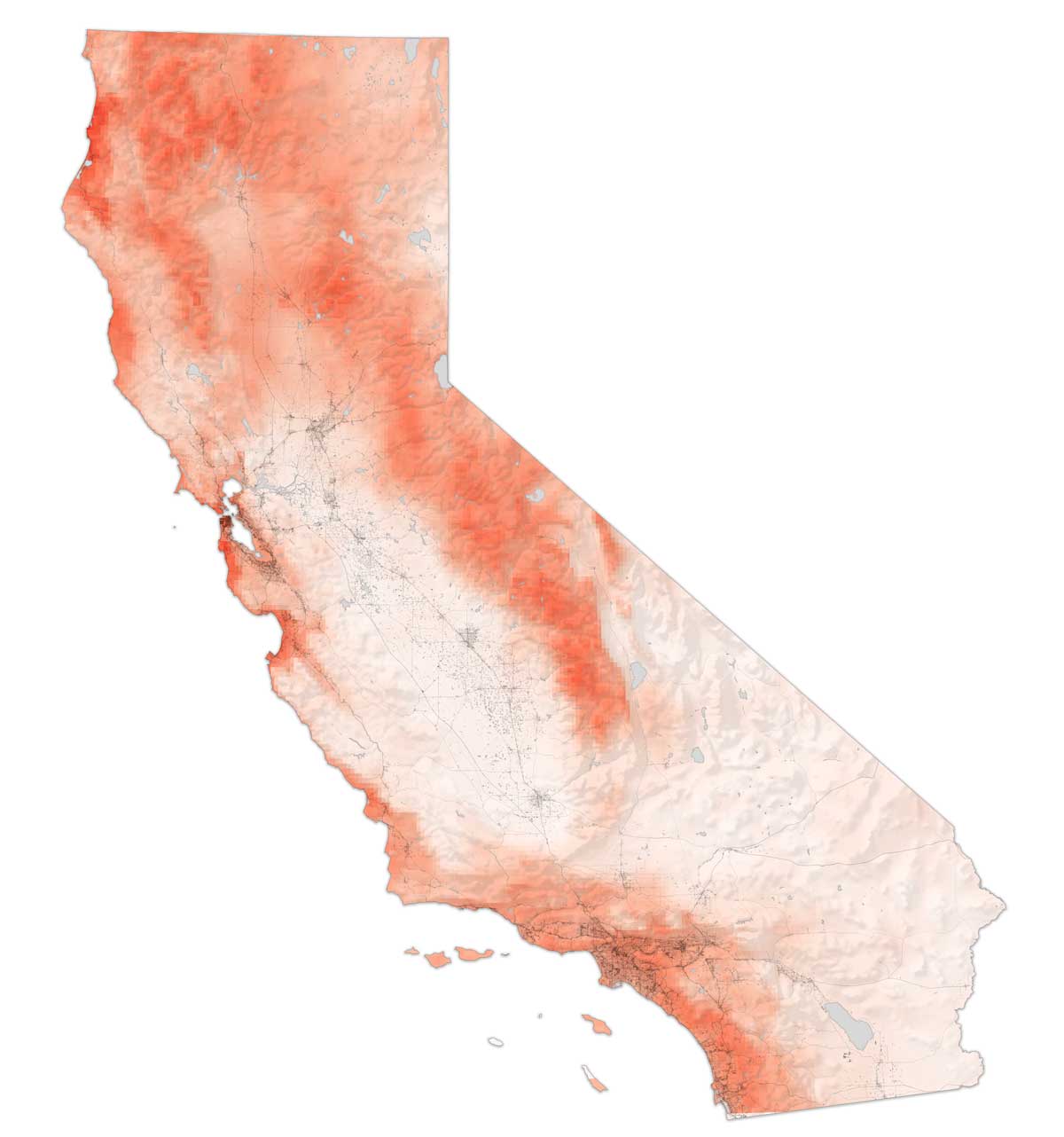
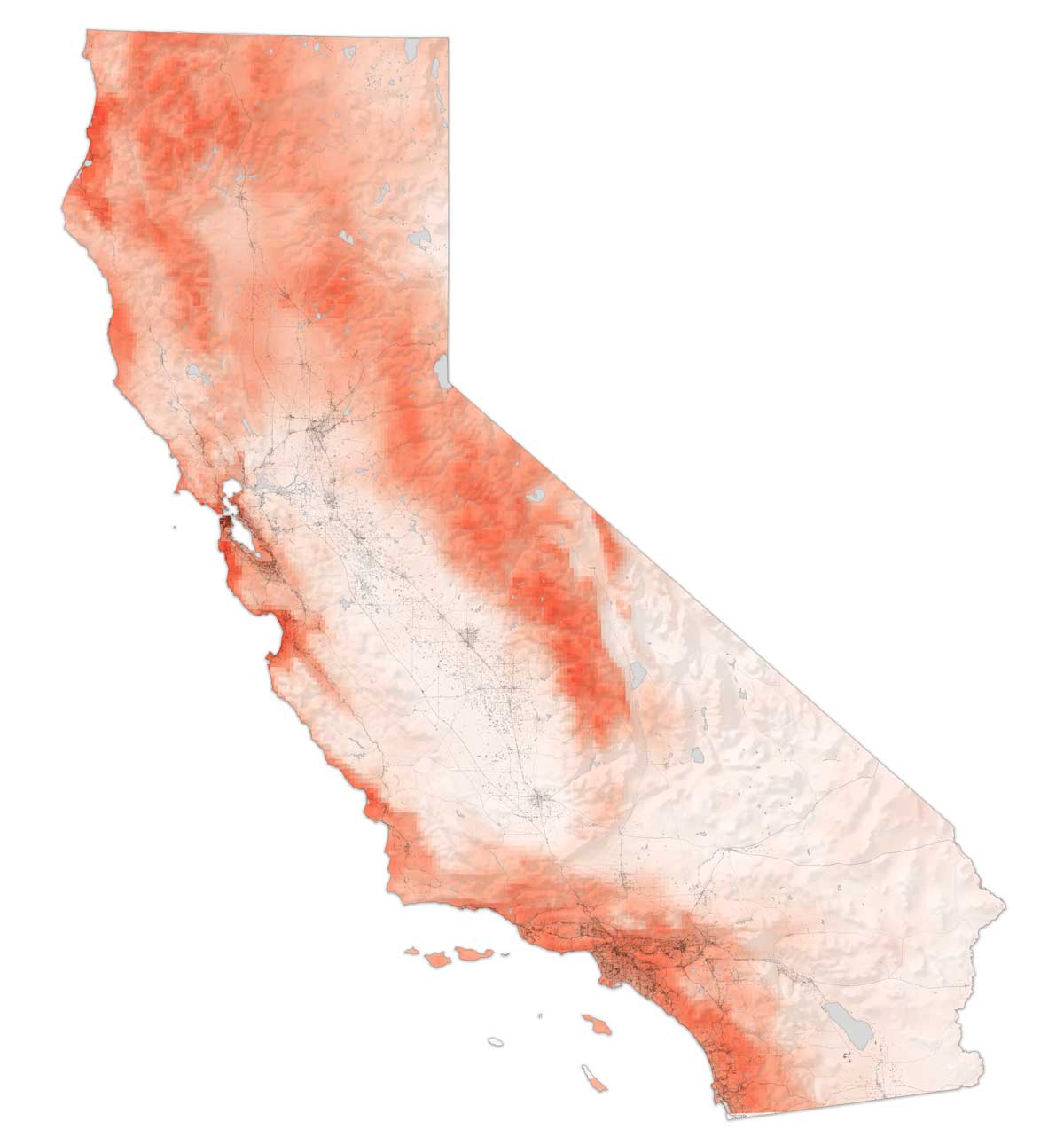
2036-2065
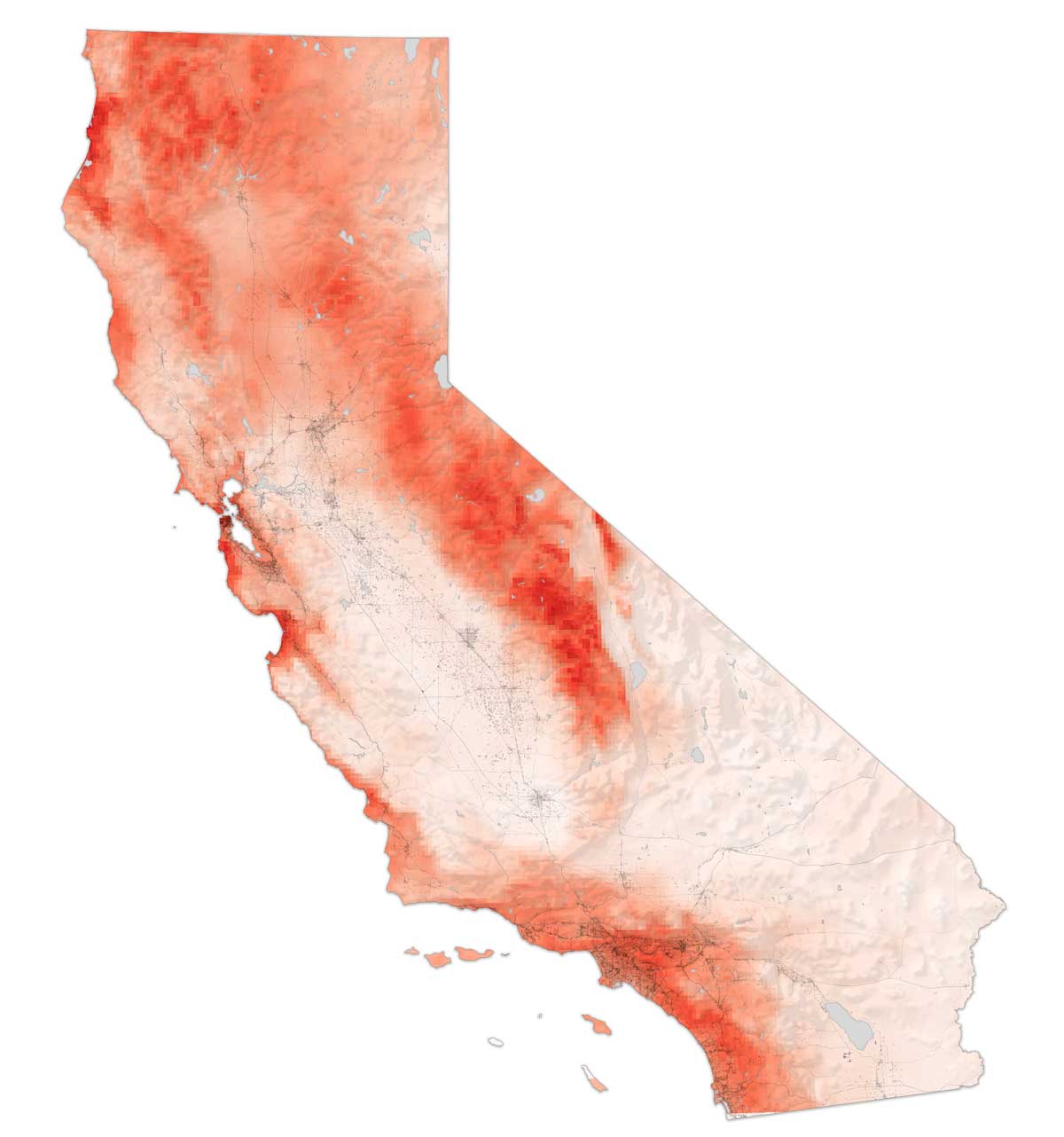
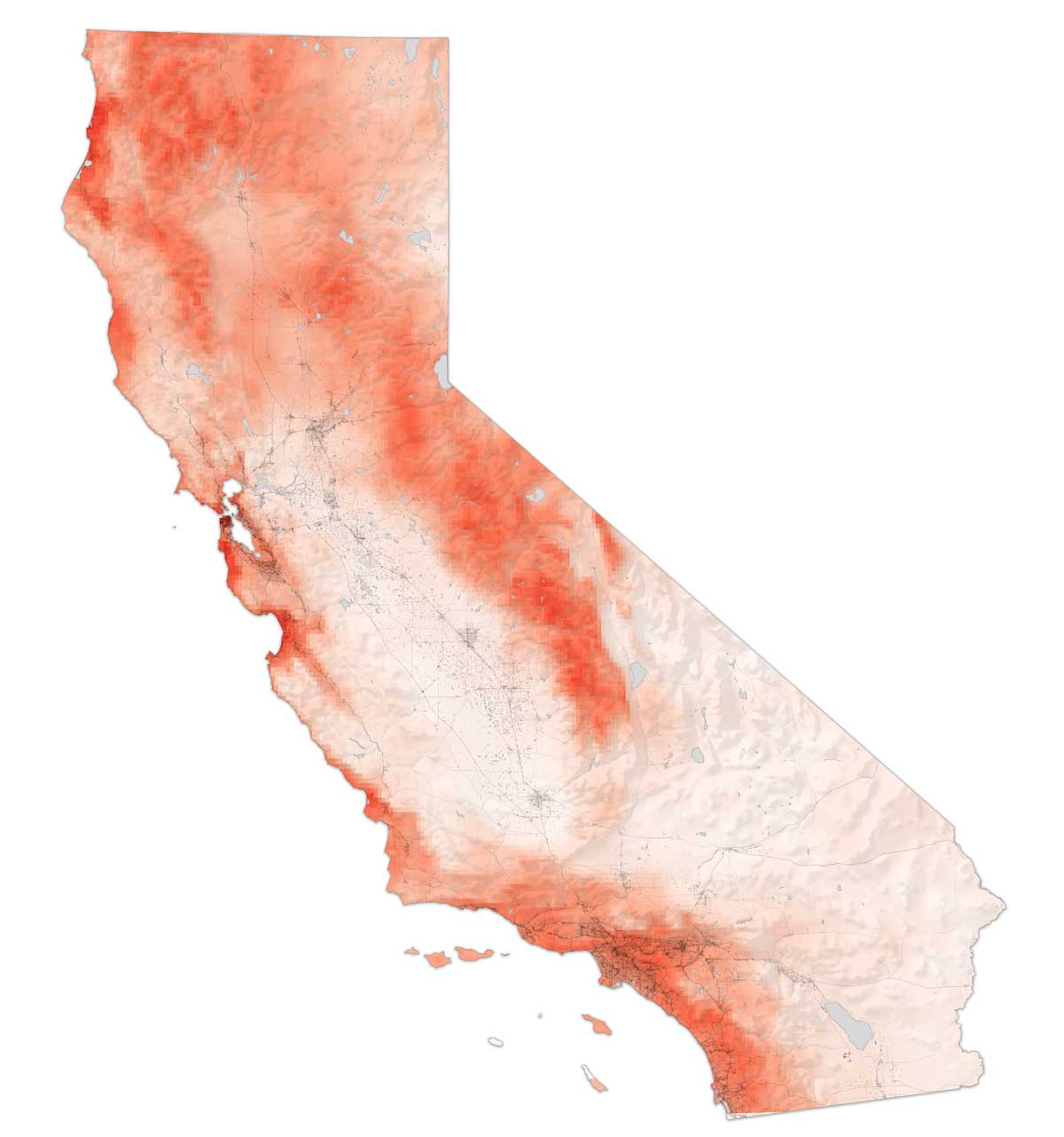
2066-2095
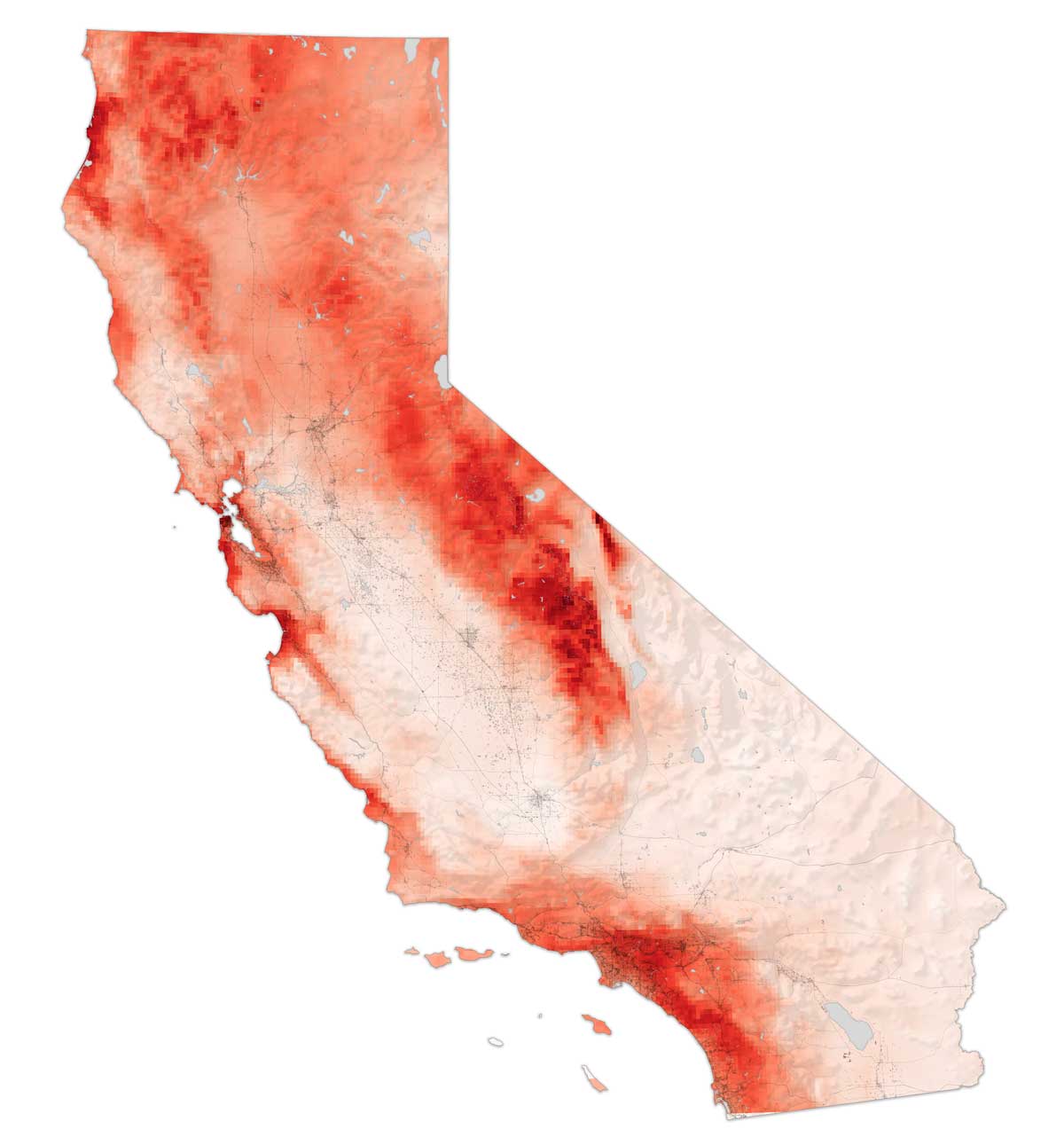
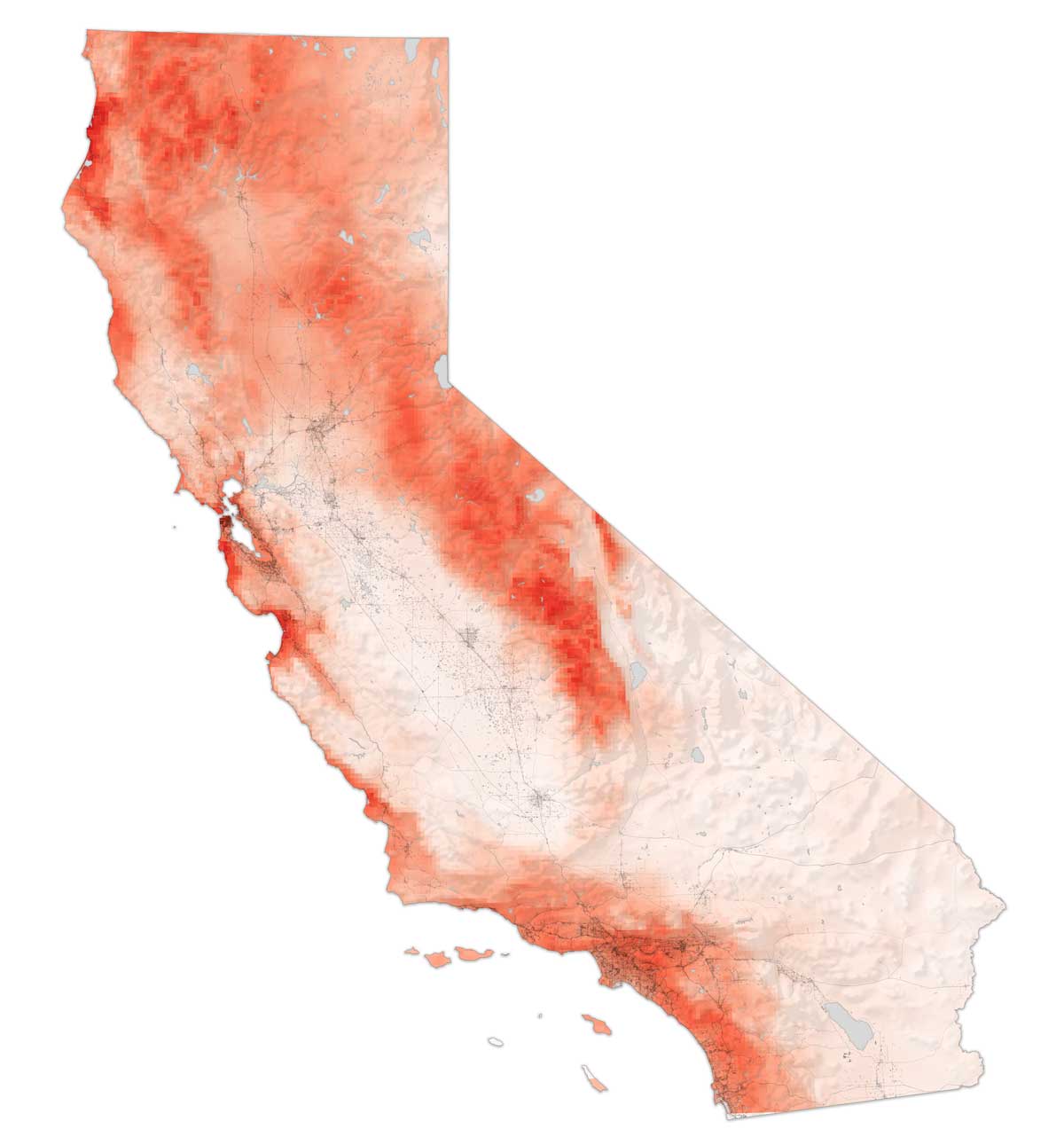
The jump in dangerous fall fire weather will be worst along the coast, suggesting places that have burned in recent years — like the Malibu hills and the forests outside Santa Cruz — are likely to burn again.
Wildfires, of course, do not burn only because of the weather. Someone, or something has to ignite them, and more than 95% of fires in California are started by humans. Wildfires also require fuel, and forest management practices in California have left more brush and trees to burn.
So what’s the role of climate change then?
“That's a really important scientific question that scientists have been working hard to answer in a systematic, objective, hypothesis-driven framework for decades now,” said Noah Diffenbaugh, a professor in the Stanford University department of earth system science, a senior fellow at the Stanford Woods Institute for the Environment, and another co-author of the paper.
In wildfires, as with flooding and heat, climate change doesn’t create novel problems; it exacerbates existing problems and compounds risks. So there is no precise way to measure how much of all this increased wildfire activity is due to climate change. An educated guess is about half, experts say. Its role, however, is growing fast. Within 20 years, climate change promises to be the dominant factor driving larger and more frequent megafires — not only in California, but across the country.
Use the table below to look up how the number of fire weather days may increase where you live.
How Autumn Fire Weather Days Will Increase Across the State
Autumn FWI days per year in
Note: FWI data was provided in 4km grid cells covering the state of California. To present FWI day values for every census-designated place in California, ProPublica used the maximum grid cell value that falls within a square bounding box containing that census-designated place for each climate scenario. Some maximum FWI values across places may be the same if those places completely overlap each other. Source: John Abatzoglou, University of California, Merced